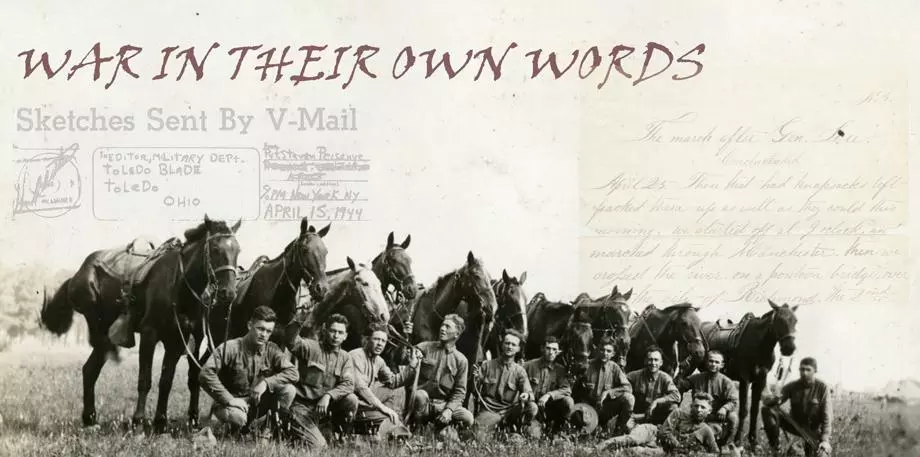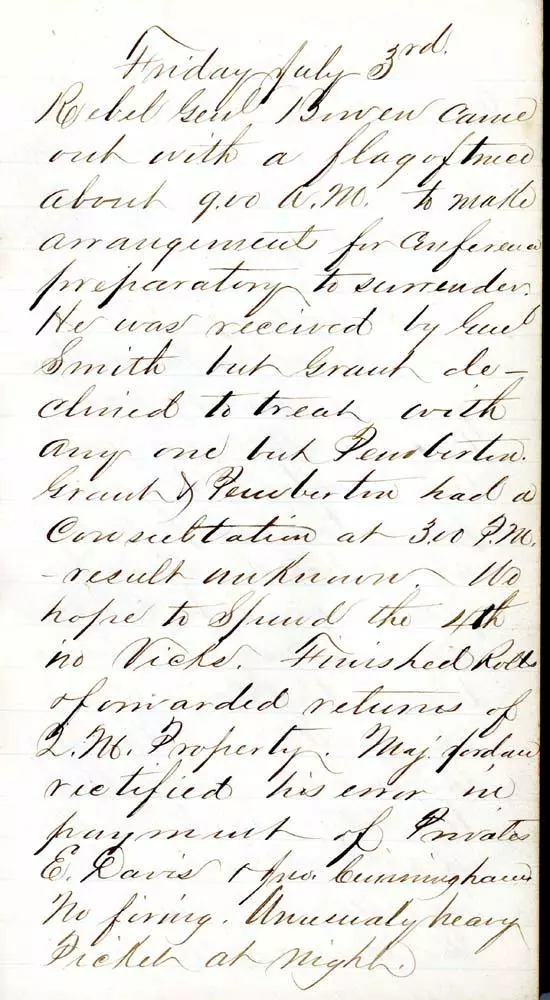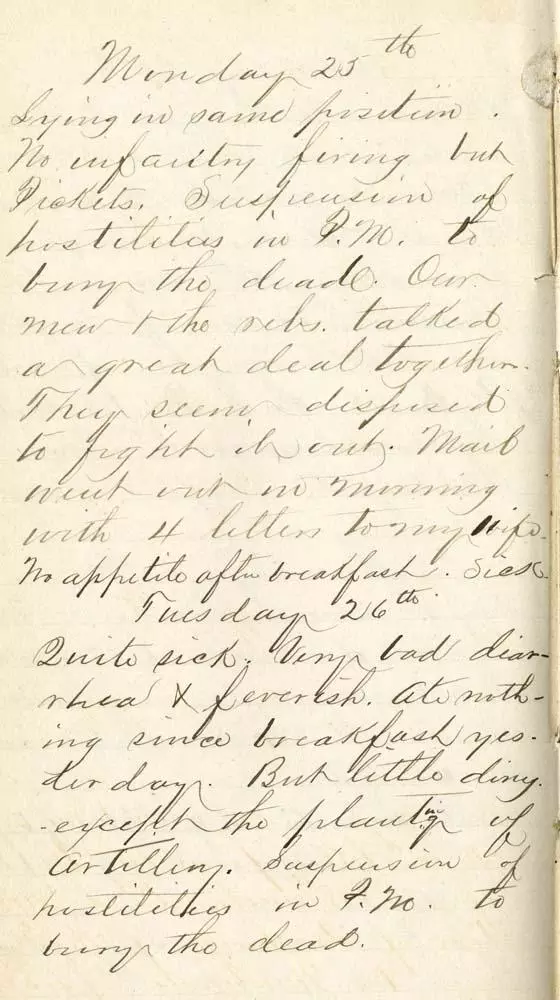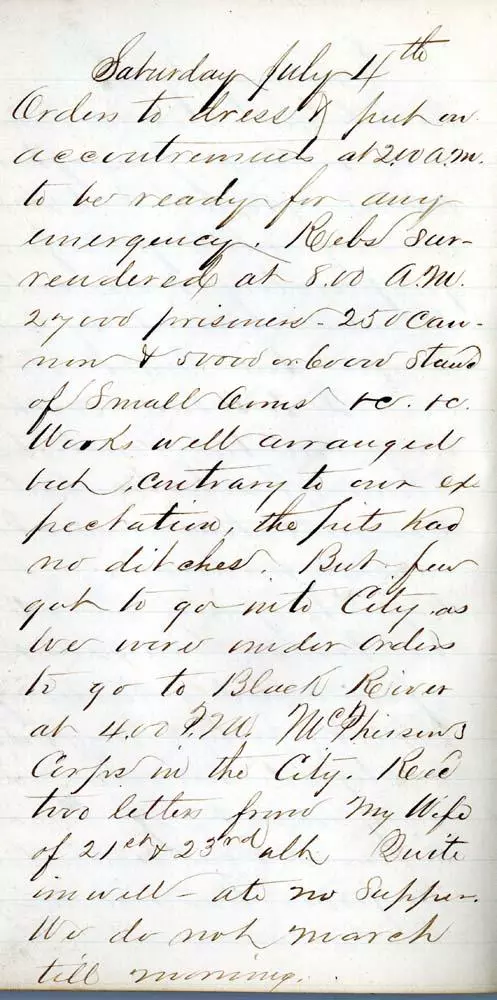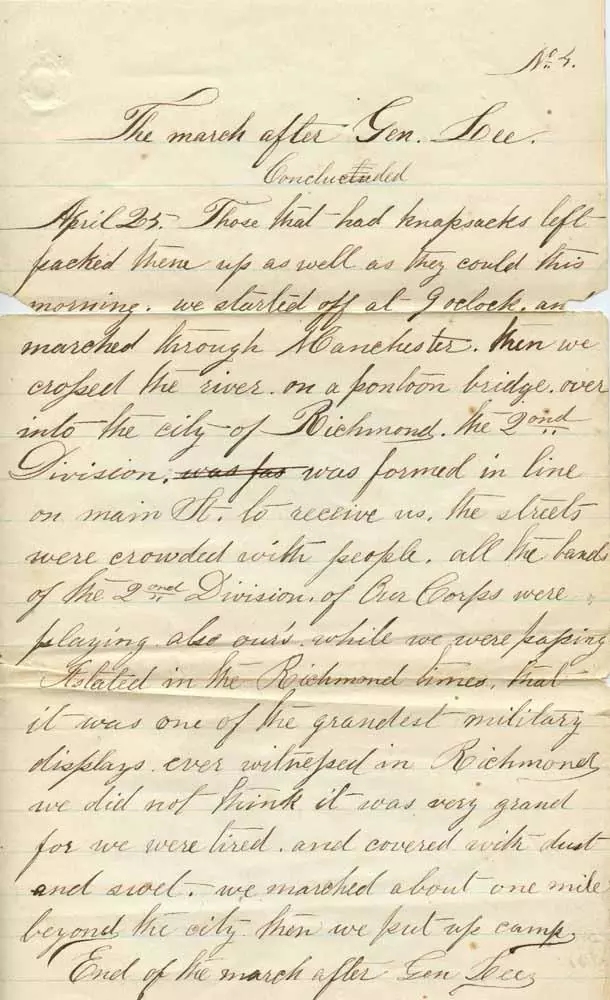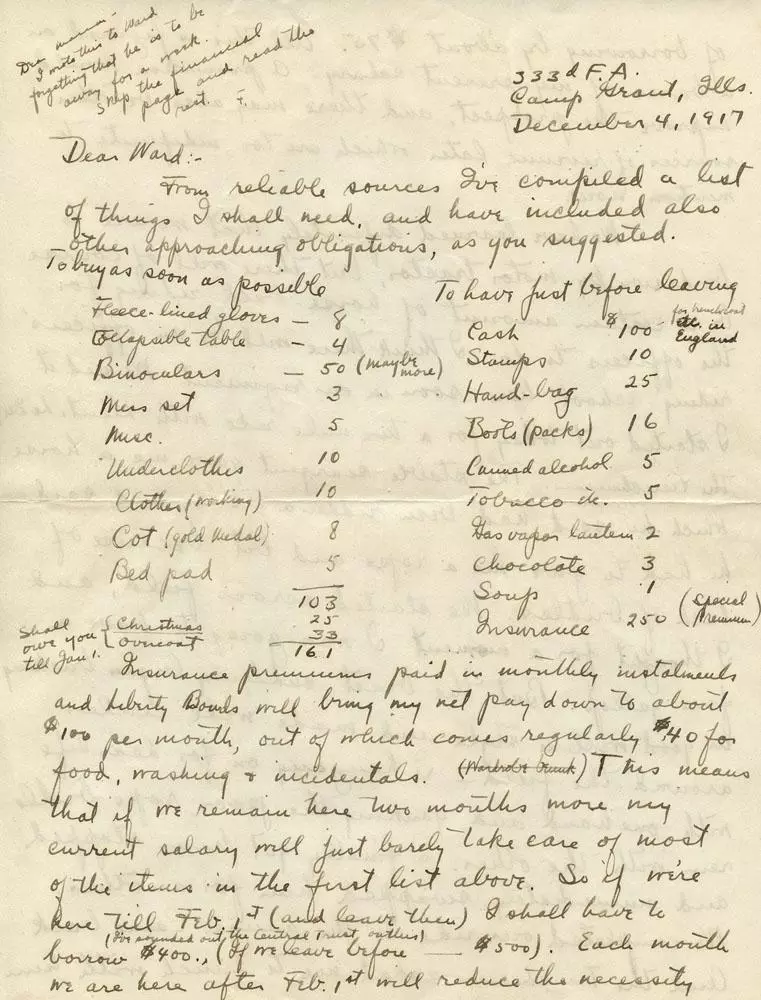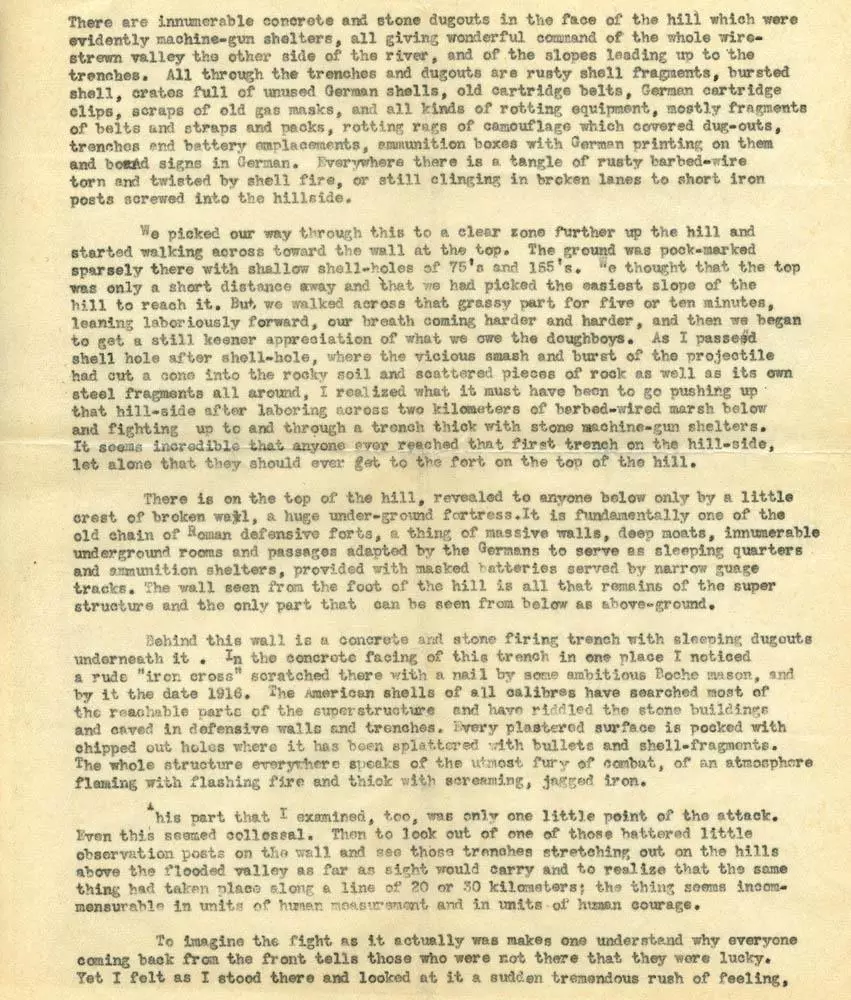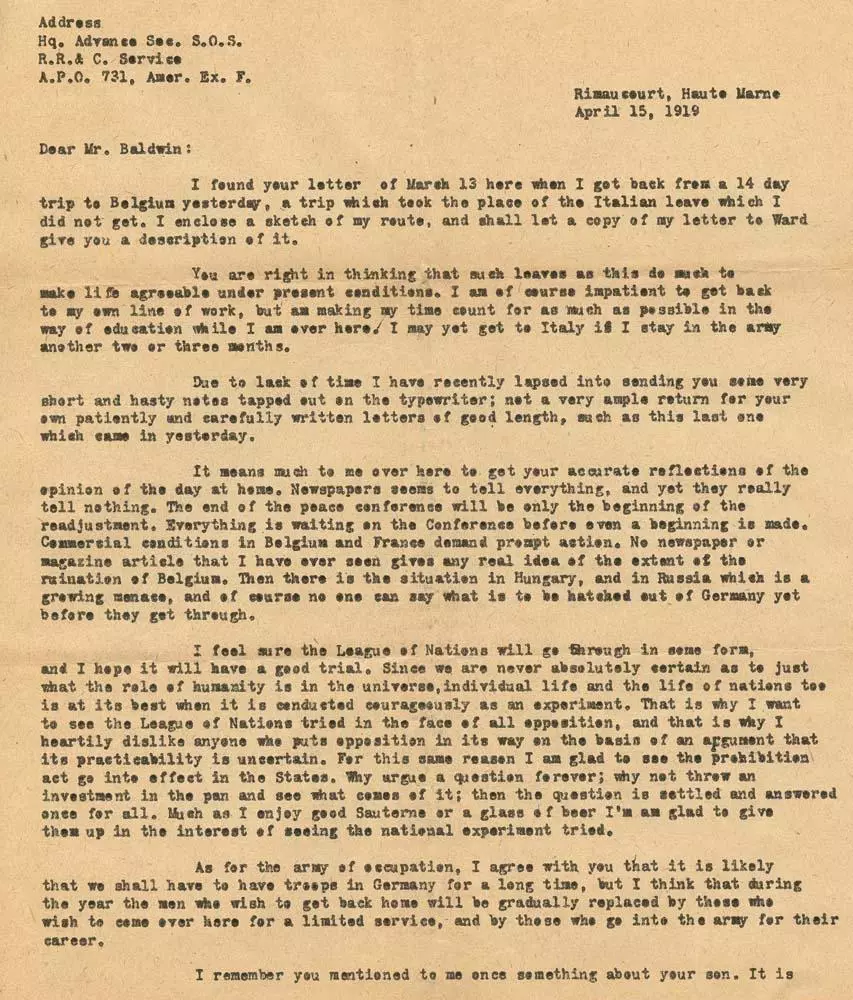War in Their Own Words: Toledo’s Veterans Write Home
By Lauren White, Manuscripts Librarian, Ward M. Canaday Center
The best picture of the realities of war is painted by the words of those who lived it. The Ward M. Canaday Center is honored to hold several collections of veterans’ letters and diaries, and this exhibit will highlight some of these items to give historical wars a fresh perspective, in the soldiers' own words. Featured are letters and diaries from Cyrus Hussey, Alexander Weber, Frank Canaday, Herbert White, Carl Joseph, Steven Pecsenye, and Leo Barlow. Each veteran is listed chronologically by the time period of the war he experienced.
Click an image for a larger version.
Cyrus Hussey – Civil War
Cyrus Hussey was born in Highland County, Ohio, and worked as a schoolteacher prior to enlisting in the 48th Regiment of the Ohio Volunteer Infantry during the Civil War. Hussey served from 1861 to 1865, and his regiment saw action in Tennessee and Mississippi, most notably during the Siege of Vicksburg. After the war, Hussey moved to Toledo, and his surviving diaries are a valuable record of a soldier’s life during the Civil War.
Three pages from Cyrus Hussey's diary
Alexander Weber – Civil War
Alexander Weber immigrated to Toledo from Switzerland in 1853 and joined the Union Army in 1864 at the age of 15. He served as a member of Company E, 67th Regiment, Ohio Volunteers until the Civil War’s end and later became a successful farmer. His account of Lee’s surrender, “The March on General Lee,” gives a firsthand account of the final events of the war from a soldier’s perspective, and a letter from Geo. Weber to his brother shows the concerns that soldiers and their families faced in their daily lives.
Two pages from Weber's letter contining accounts of the Civil War
Frank Canaday – WWI
Frank Canaday, brother of Ward Canaday, served as a Lieutenant, 333rd Field Artillery, during WWI. His fluency in French was invaluable as a translator, and his letters to friends and family document the aftermath of the war and the effects it had on the landscape of Europe.
Three pages from Frank Canaday's letter
Herbert White – WWI
Herbert H. White of Youngstown, Ohio entered the United States Army in 1917. After a brief period of training at Camp Perry, Ohio he was sent to France as a Wagoner in Co. B. Ammunition Train. While there, he served as an ammunition truck driver, and took part in many well-known battles such as the Meuse-Argonne offensive of September 1918. When World War I ended in November 1918, White finished his tour of duty in Europe and returned to the United States in 1919.
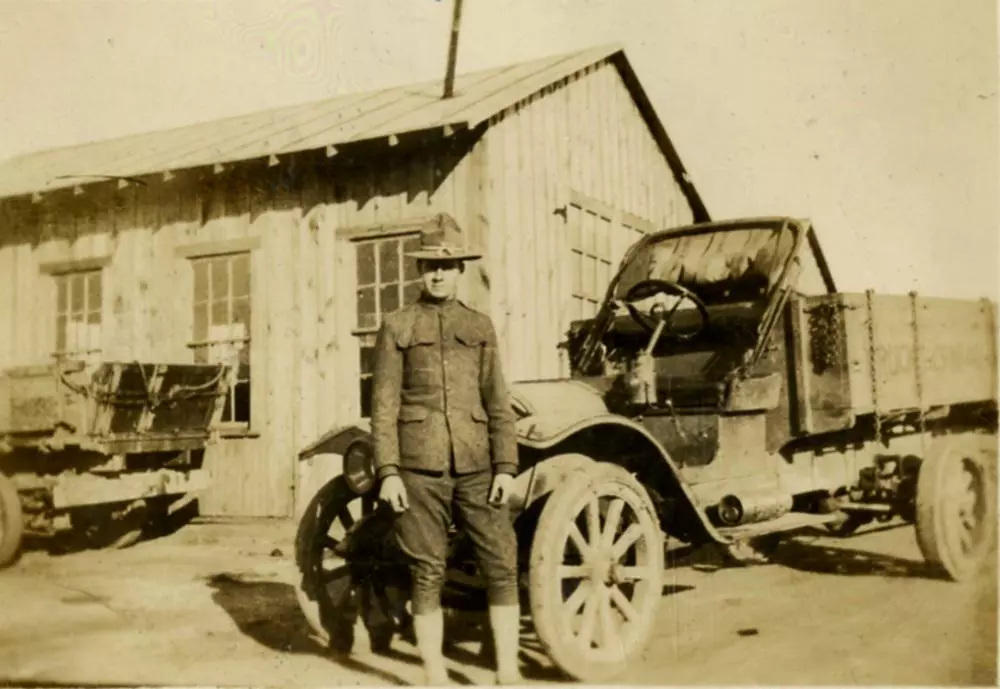 A photograph of Herbert H. White
A photograph of Herbert H. White 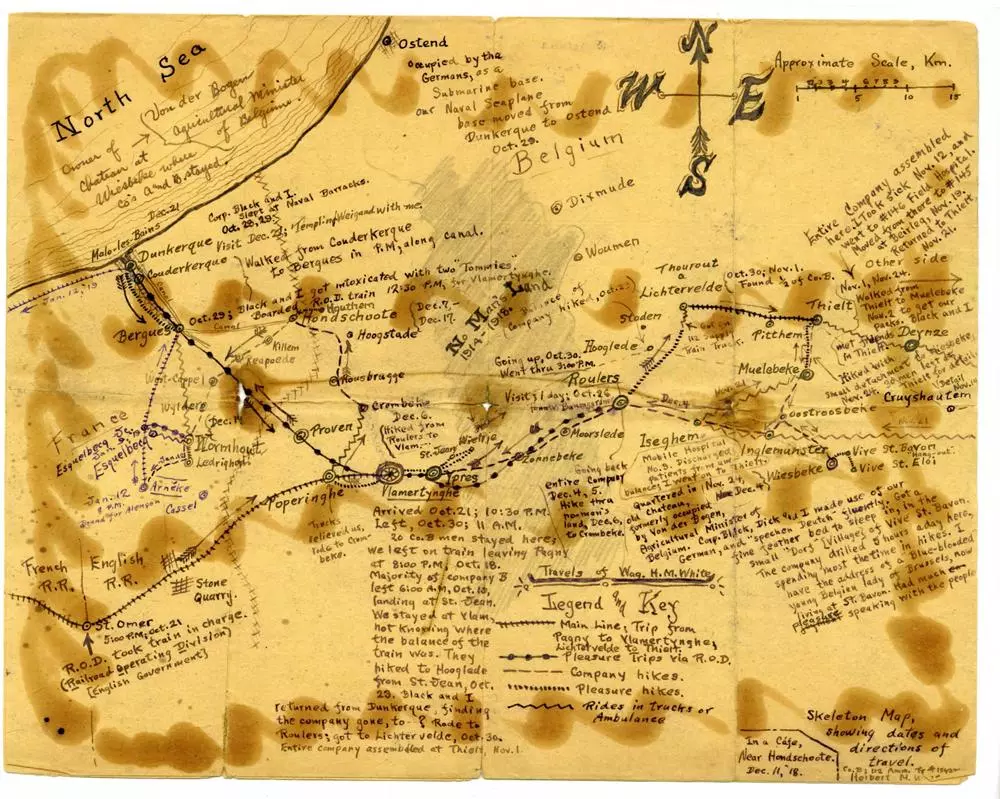 A 1918 map drawn by White
A 1918 map drawn by White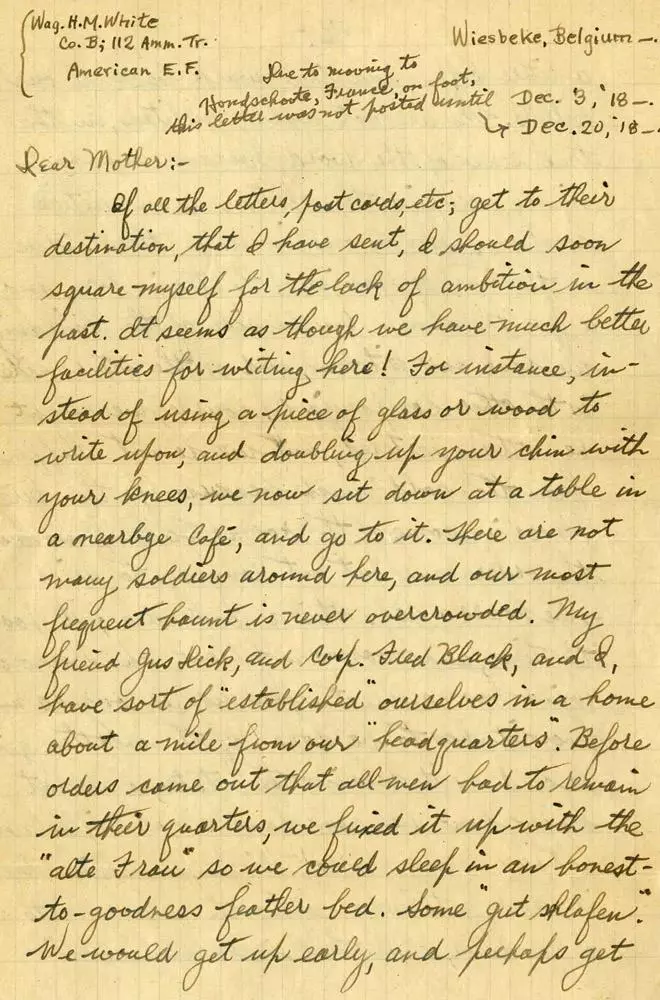 White's letter from Belgium
White's letter from Belgium
Carl Joseph - WWII
Carl Joseph was born raised in Toledo’s near north end where his parents ran a grocery store. He loved books, having read Pericles, Sophocles, Dostoyevsky and Hemingway, among others, when he entered The University of Toledo at age 27. In correspondence with University president Phillip Nash, he sent the library books he found in Rome during his service in WWII. Joseph, a paratrooper, was killed in action on D-Day, June, 6, 1944, the first day of the Allied invasion of Normandy, France.
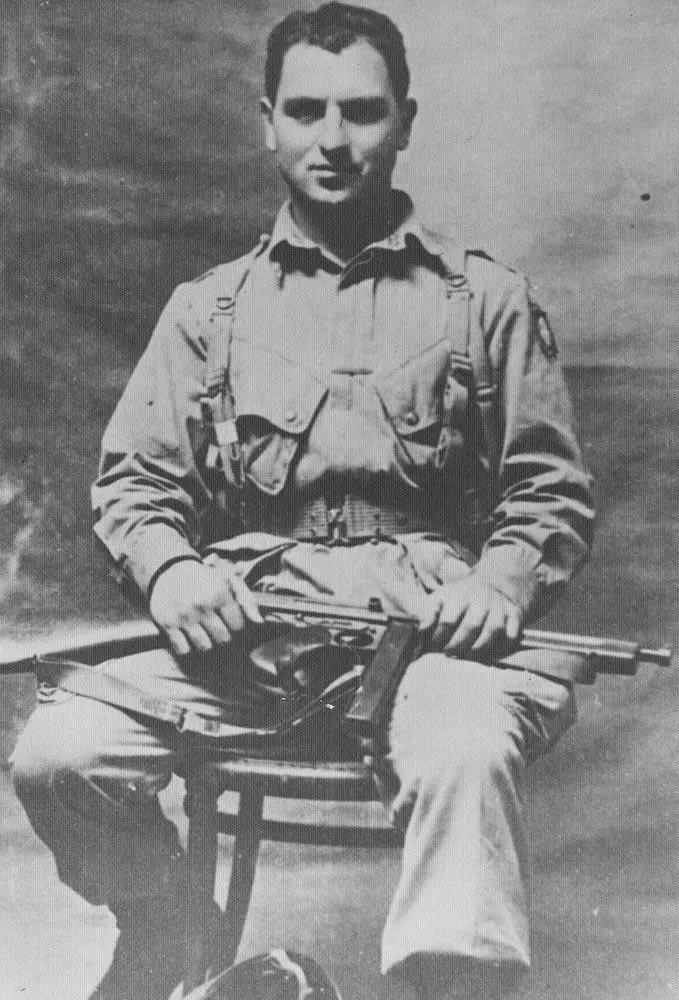 Photo of Carl Joseph
Photo of Carl Joseph 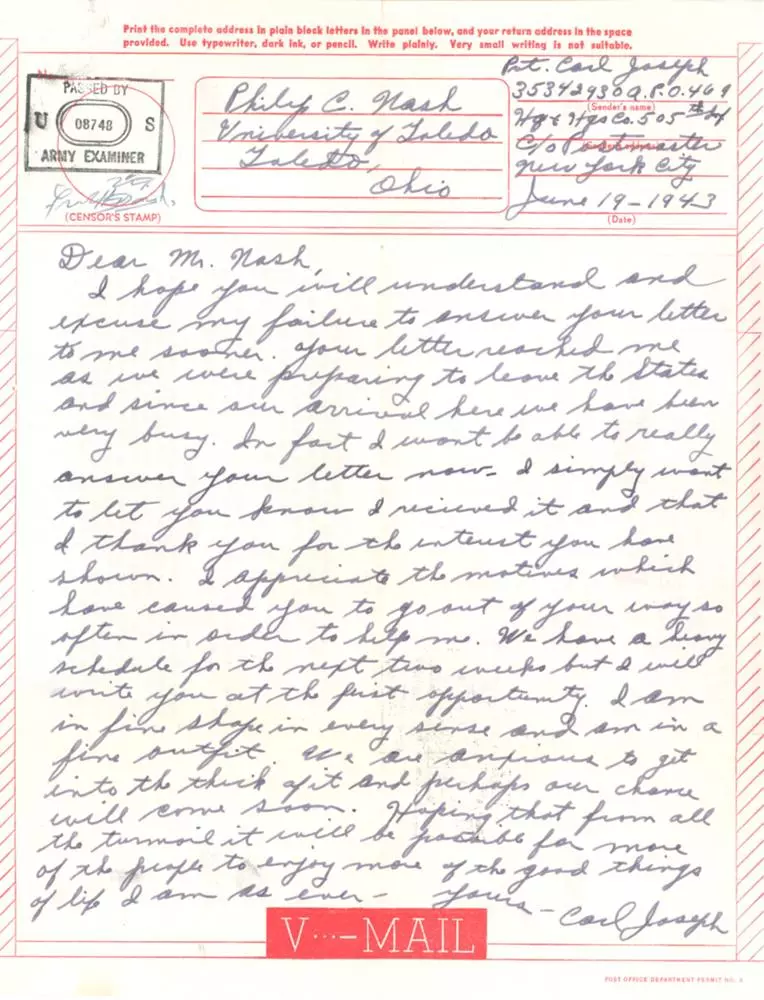 Carl Joseph's V-mail to UT President Nash
Carl Joseph's V-mail to UT President Nash 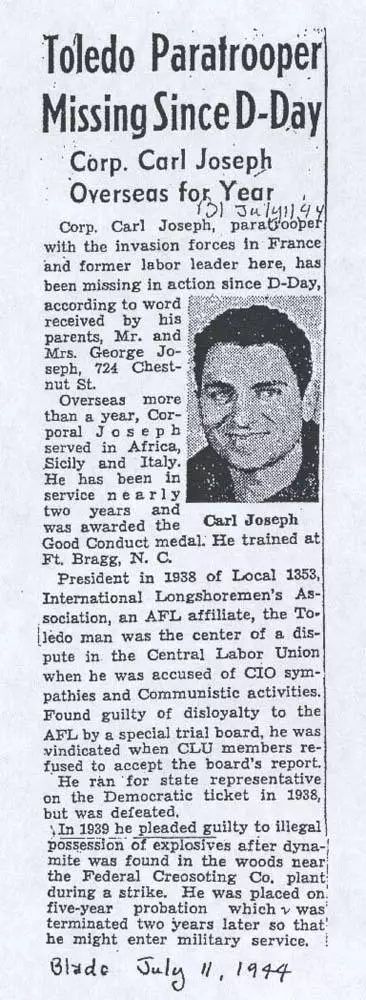 Blade article about Carl Joseph
Blade article about Carl Joseph 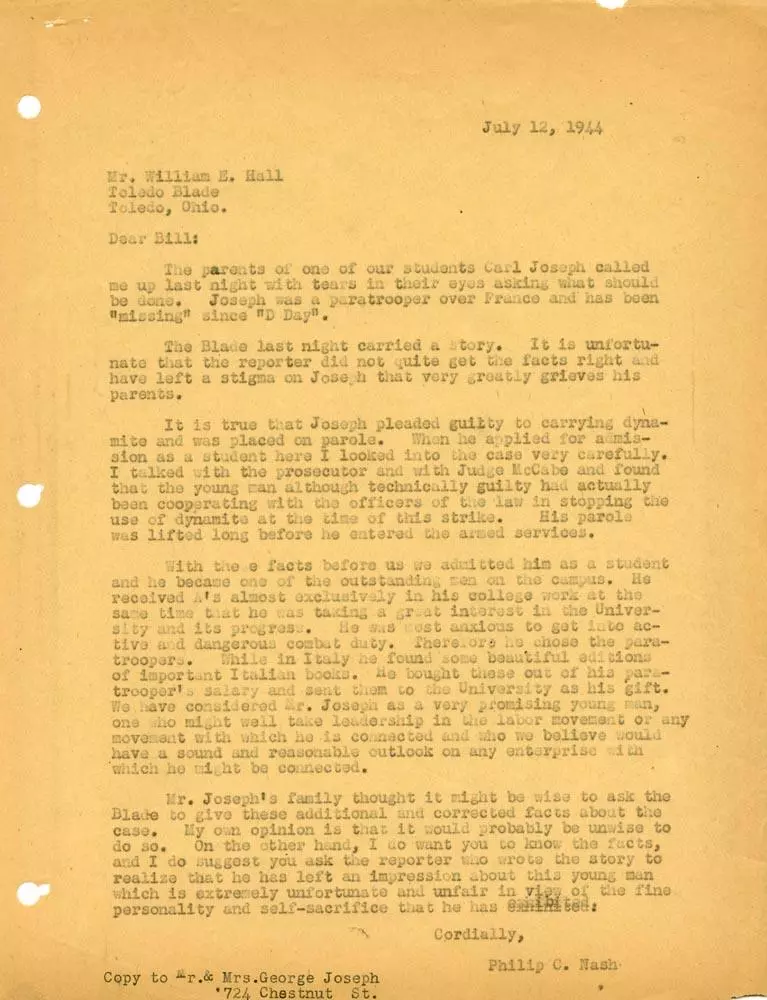 UT President Nash's letter to Carl Joseph
UT President Nash's letter to Carl Joseph
Steven Pecsenye - WWII
Steven Pecsenye was a second-generation Hungarian who was born and lived in Toledo, Ohio. Upon his graduation from Macomber High School, he entered the Army and served from 1945 to 1947 as a scout in the 7th Infantry. This allowed him to travel extensively throughout Italy, France and Germany. During this time he wrote his parents, niece, and girlfriend (future wife) almost every day, often including descriptive drawings of local sights and people.
 V-Mail from Pecsenye, 1943
V-Mail from Pecsenye, 1943 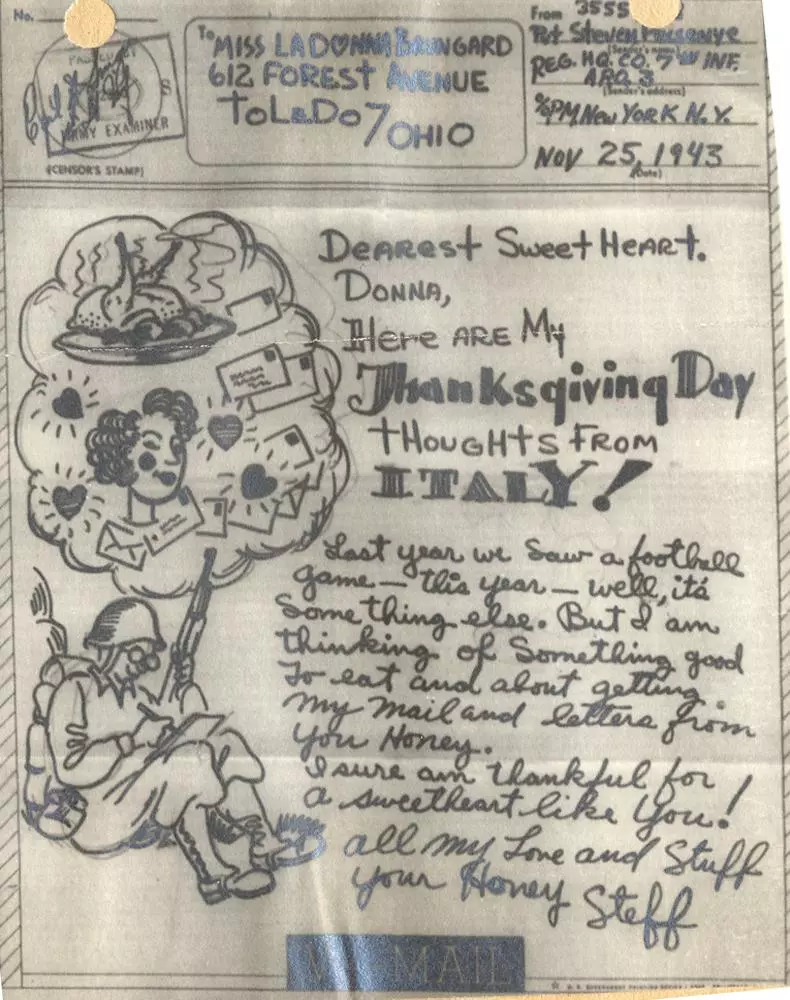 Thanksgiving V-Mail
Thanksgiving V-Mail 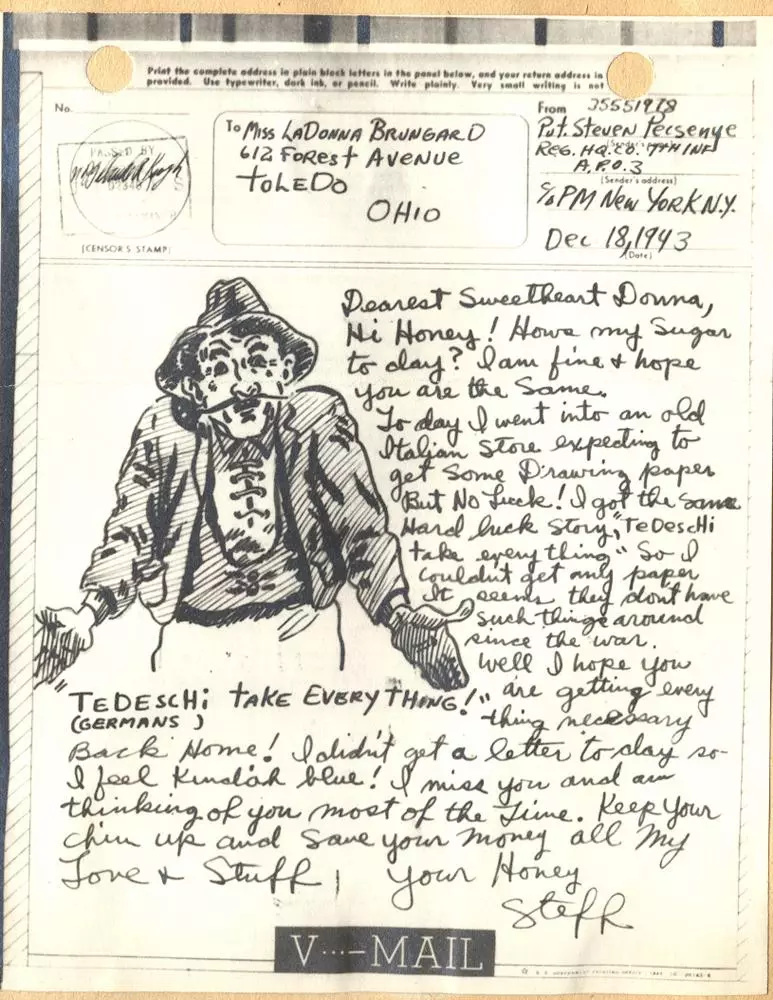 Pecsenye's V-Mail about needing more drawing paper
Pecsenye's V-Mail about needing more drawing paper 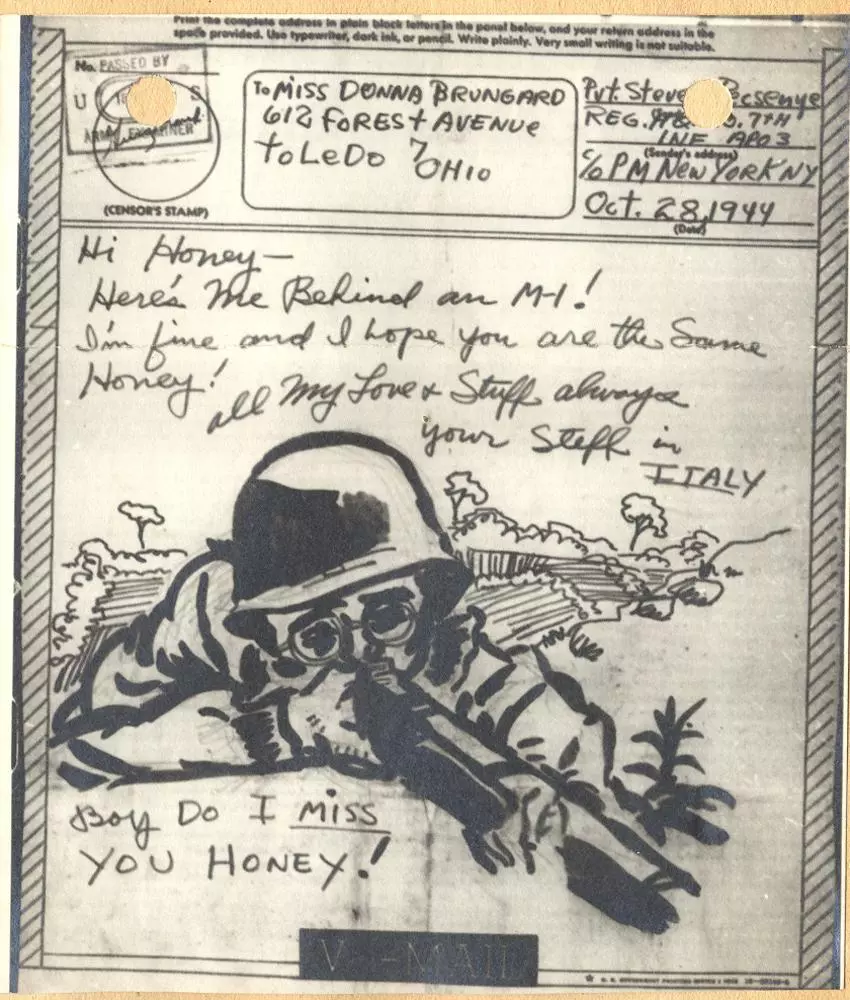 1944 V-Mail with self portrait in action
1944 V-Mail with self portrait in action
Leo Barlow – Korean War
Leo Barlow served in the United States Marine Corps from 1950-53 and was stationed in Korea and Japan in 1951. He frequently wrote home to his mother throughout his military service.
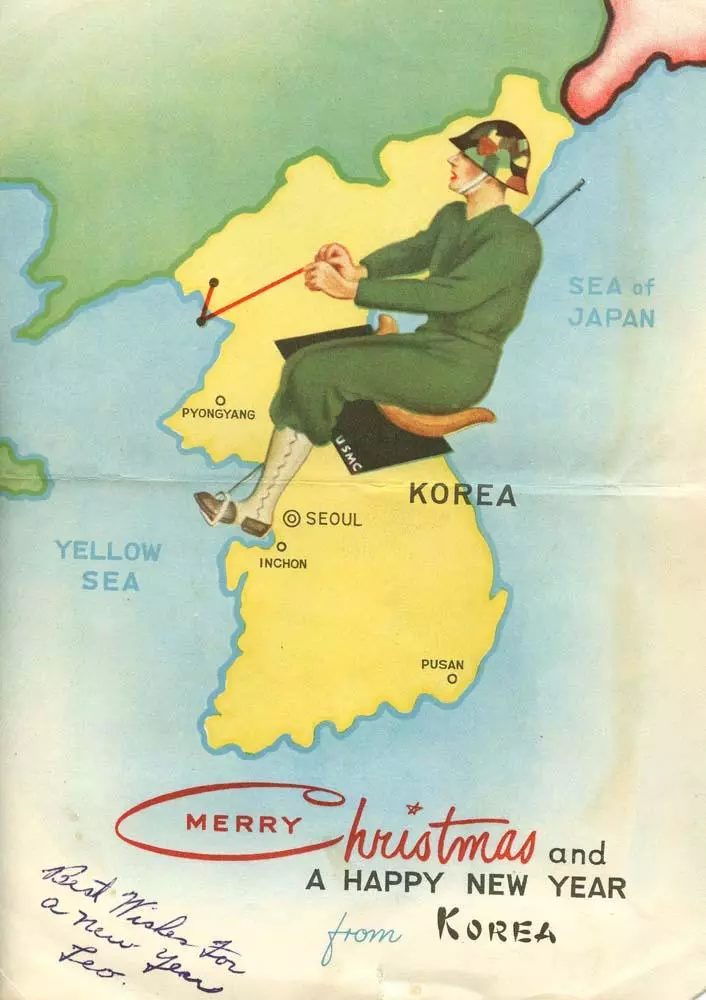 Holiday Card from Leo Barlow
Holiday Card from Leo Barlow  Letter from Barlow, 1951
Letter from Barlow, 1951 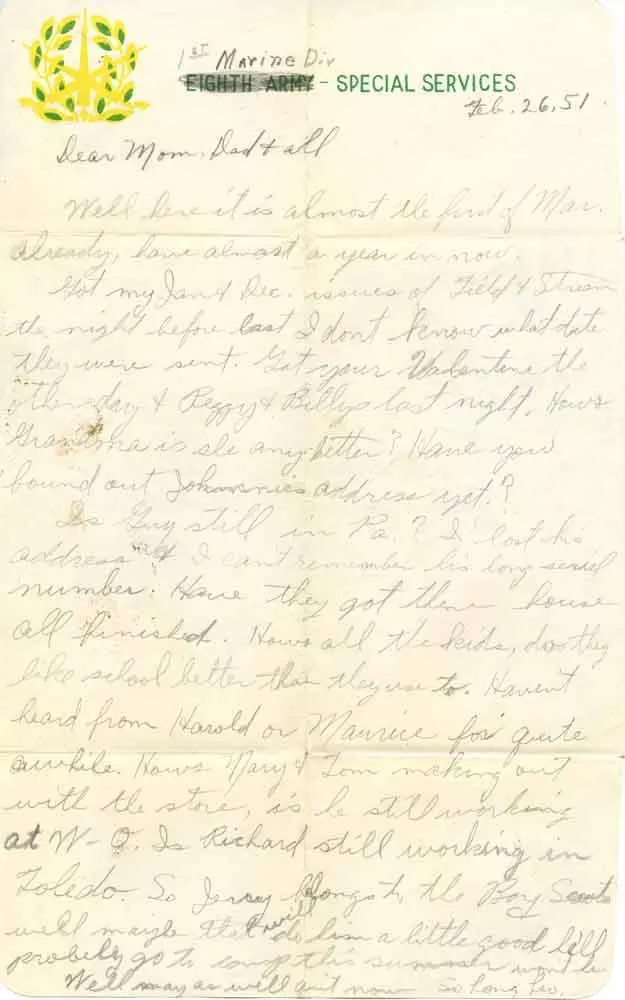 Letter from Barlow, 1951
Letter from Barlow, 1951

